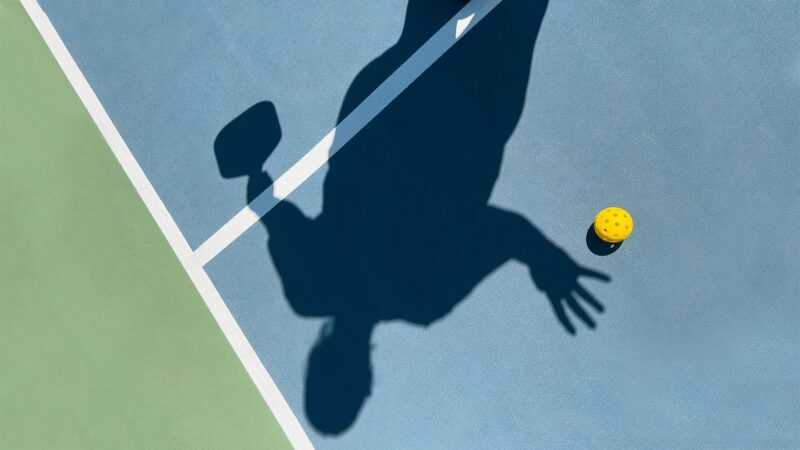Over the last decade, pickleball has exploded from a quirky pastime to one of the fastest growing sports in America. This paddle sport played on a badminton-sized court has now accrued millions of enthusiasts attracted to its fun, social nature. However, with the influx of new players trying a highly active game, injury rates have also quickly risen. The quick starts-and-stops, explosive pivots, overhead swinging, and uneven footing places stress on areas unaccustomed to such motions.
As many weekend warriors dive into pickleball without much conditioning, certain body parts tend to bear the brunt of overuse issues. In this article, we overview the five anatomical areas most susceptible to pickleball injuries along with prevention and treatment options for staying healthy on the courts.
The key trouble spots include: forearm strains, shoulder impingement, achilles tendonitis, low back pain, and leg muscle pulls. While the majority of pickleball injuries are mild strains and sprains, they can still bench players for weeks or months if not addressed. Let’s explore these common vulnerabilities in more detail…
1. Forearm Injuries – When Pickleball Gets Under Your Skin
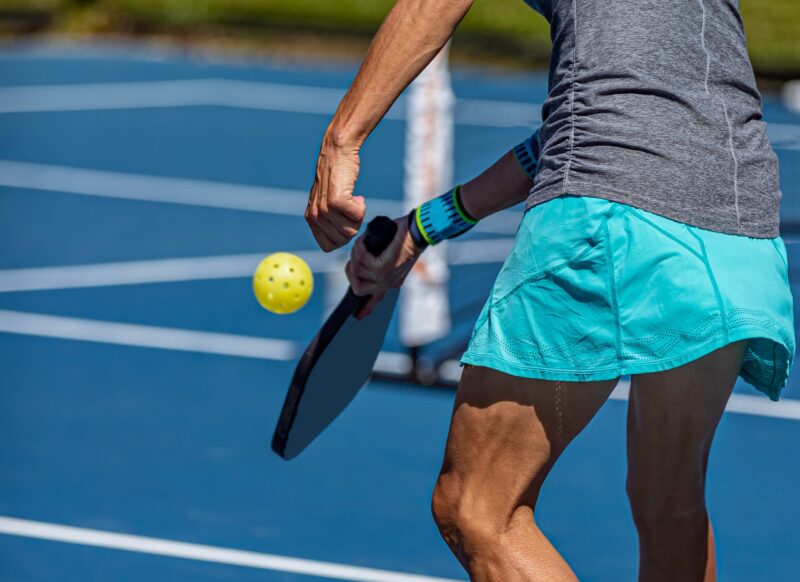
The quick back-and-forth rallies in pickleball place great strain on the muscles and tendons of the forearm as they absorb the vibrations of a solid paddle hit. Much like its cousin sport tennis, pickleball often leads to overuse injuries like tendonitis or lateral epicondylitis (aka tennis elbow). Studies indicate nearly 33% of dedicated pickleball athletes report forearm pain linked to play.
This gradual inflammation of the tendons can cause nagging soreness but also sharp pain on the outside of the elbow joint. Symptoms usually peak after activity but chronic issues can flare up anytime. Beyond painful forearm extends/flexes, weakness in the grip and dropping items also signal trouble.
Initial treatments include ice packs, anti-inflammatory meds, elbow braces, and stretching/strengthening programs. Incorporating tools like CastleFlexx into your regimen can enhance these stretching and strengthening exercises, offering more targeted relief and support in the recovery process. Total rest of 3-6 weeks from play usually becomes necessary though, giving strained tissue time to rebuild strength. With forearm injuries so prevalent in pickleball, prevention starts with proper paddle grip, strokes, smash technique along with builds ups in duration/intensity.
2. Shoulder Injuries – When Smashes Go Sour
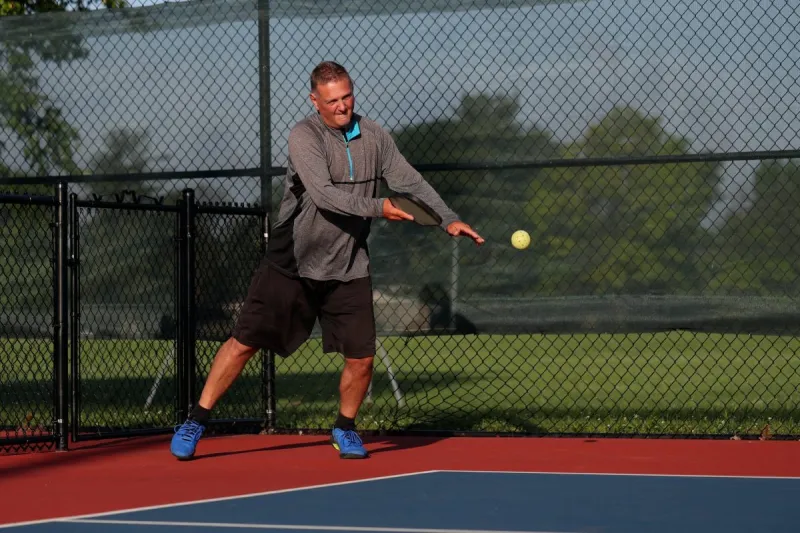
The aggressive overhead smash is a signature pickleball move but it can also lead to one of the game’s most debilitating injuries. Similar to tennis players, around 25% of dedicated pickleball athletes report shoulder issues like impingement and rotator cuff strains.
The pickleball serve/return process itself contributes as players swing the arm overhead forcefully while also reaching laterally with joint over-rotation. Gradually, this strains the rotator cuff muscles and shoulder socket while sometimes also compressing structures.
Early warning signs include sore shoulders after play, localized pain when serving/smashing, limited range of motion and declining power on overhead shots. Rest, NSAID meds, physical therapy exercises, ultrasound treatment, and cortisone injections can help treat these overuse shoulder injuries.
Preventatively, be sure to strengthen upper back/shoulders with resistance training. Also emphasize proper smash form – don’t open up early or “leak” energy laterally. Time jump training also hones dynamic shoulder stability for pickleball demands. Stay tuned in to stroke mechanics and fatigue factors that reduce shoulder function.
3. Achilles Injuries – Pickleball’s Weak Heel
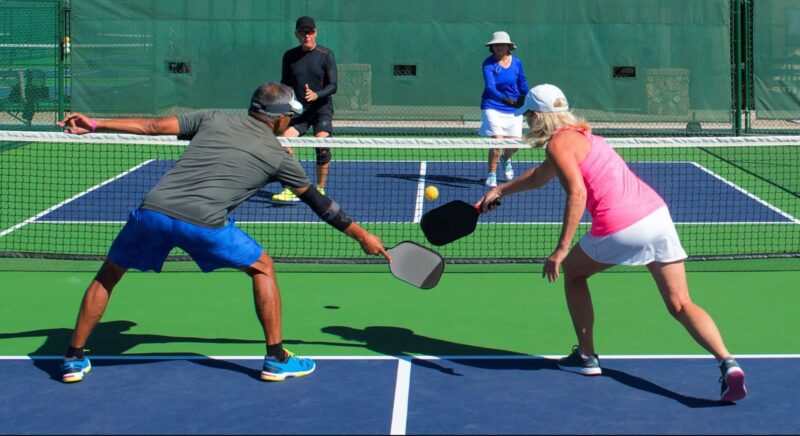
As a fast-paced game demanding quick side-to-side movements and firm stops, it’s no wonder roughly 20% of avid pickleball players report Achilles problems. The sport entails constant starts/stops, lunges and pivots which overstretches the Achilles tendon at the back of the ankle.
Gradual inflammation termed Achilles tendonitis manifests as stiffness/soreness after play. However, sudden overextensions can also cause microtears and even full ruptures in severe cases.
Treatment runs the gamut from rest, ice, compression, elevation, OTC pain relievers, orthotic inserts, physical therapy, shockwave treatment and possibly surgery for complete tears. Recuperation takes anywhere from 4-6 weeks for mild strains to over 6 months for ruptures.
4. Lower Back Injuries – The Pain of Poor Posture
With all the asymmetric twisting and bending to hit angled pickleball shots, it’s no wonder around 30% of players complain of back pain. The body absorbs increased spinal torque during quick reaction shots. Bending to low balls can also tweak sensitive discs and nerve roots.
Most players note back soreness creeping in over time versus acute incidents. Stats do show older weekend warriors over 50 disproportionately incur back injuries from sudden overexertion on new activities.
Treatments span rest, ice/heat, OTC meds, chiropractic care, massage and physical therapy focused on core/glute strengthening. Preventatively, those with preexisting back issues should pursue gentle pickleball training progressions.
All players should emphasize proper stance, fluid footwork and torso rotation to hit shots. Building core and glute endurance better supports the spine’s stability too. With the back easily strained during play, listen for early discomfort signals. Refine technique weaknesses that cause poor mechanics like reaching for wide balls. Learning to protect the back takes pickleball enjoyment into extra innings.
5. Leg Muscle Strains – When Hustle Turns to Hobbled
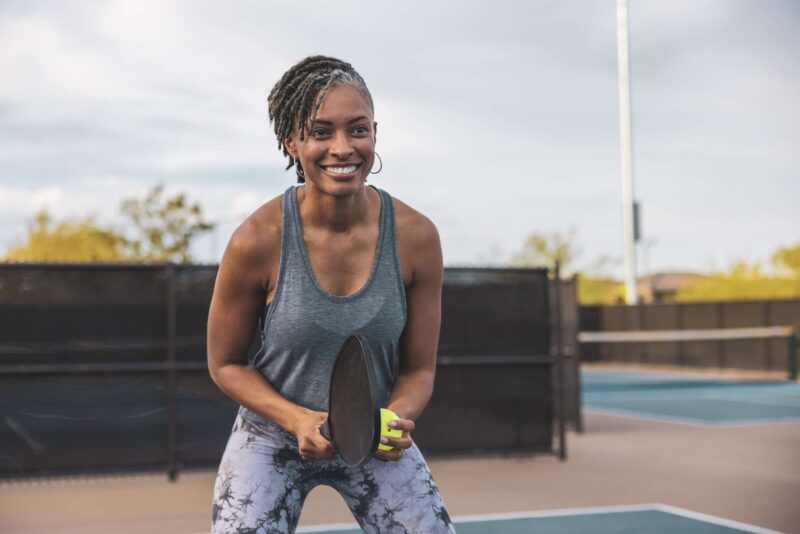
As an action-packed game, pickleball calls for sudden sprints, hard stops, lunges and pivots to chase down shots. Approximately 15% of pickleball athletes incur strains and pulls to major leg muscles like the hamstrings, quads and calves.
These dynamic moves can overextend muscles past capacity leading to anything from microscopic tears to complete ruptures. Pain ranges from moderate to excruciating depending on severity. Often a popping sensation is felt at the time of injury.
Rehab progresses from stretching to strength training over 6-8 weeks for moderate strains and up to 12 weeks for complete muscle tears. Returning to the courts too soon risks re-injury and worse outcomes.
Some preventative measures include building leg strength, dynamism, balance and stamina with training like resistance bands, plyometrics and agility ladders. Always warm up properly and stretch out muscles before hitting the pickleball courts. During play, conscientious footwork and smooth moves win the day over reckless leaping efforts.
Conclusion
In this overview, we’ve outlined five orthopedic trouble spots that regularly ail enthusiastic pickleball competitors – forearms, shoulders, achilles, backs and leg muscles. While few gear up for competition with fitness in mind, training these vulnerable yet vital areas can make or break your time on the courts.
Ultimately by complementing the fast-paced excitement of pickleball with diligent prehab and rehab, your body resiliently adapts. Before hitting the courts, be sure to properly warm up, stretch, and integrate cross-training that prepares muscles stabilizing these common injury hotspots.
While some experience pickleball’s learning curve through painful missteps, we hope this overview has armed you with preventative insight. Now you can graduate from pickleball pastime to pickleball longevity by keeping key body parts pain-free and the enjoyment sizzling for years to come!
